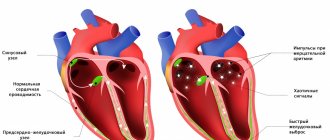The practice of meditation calms the nervous system. Have you ever wondered why people who practice meditation and yoga look so calm and happy?
Many people suffer from nervous system overstrain and stress due to the fact that they have lost the ability to quickly switch the nervous system into recovery and rest mode. Meditation is the best practice for this. Falling asleep quickly, deep and pleasant sleep, fresh and good morning - these are the benefits that regular meditation before bed will give you.
At the end of this article you will find a bonus: audio meditation for self-practice before bed!
Don't forget to get your free online course on mindfulness meditation : get the course for free
There I show you the fastest and safest way to learn to meditate from scratch and bring a state of mindfulness into everyday life.
The main secret of the nervous system
The human nervous system consists of two parts. Each part performs its function. These are the sympathetic and parasympathetic nervous systems.
The parasympathetic system regulates unconscious processes in the body. We cannot directly control parasympathetic processes. These processes, for example, include digestion, metabolism, blood flow, and the work of hormonal glands. All of this operates without our direct control. The parasympathetic system is responsible for the actions that occur when the body is at rest; it is a state of relaxation and recuperation.
The sympathetic nervous system refers to our conscious actions: physical and mental work. She is responsible for exerting effort and wasting energy to achieve goals in the outside world.
Feel the difference: we can consciously spend all our strength if we want. But we can’t do anything to restore our strength, just step aside and not interfere with the natural force to fill us with energy again.
If we simplify a person to the level of an animal, then the sympathetic system is activated in the process of achieving a goal. When we get food, fight with the enemy, run away or hide from danger. All these active actions serve us for survival.
The parasympathetic nervous system turns on when we have obtained food and eaten, won a battle, avoided danger and are lying down, resting.
In modern humans, the sympathetic system is active almost all the time we are awake. Nowadays, we rarely or even almost never encounter situations on the brink of life and death, as was the case in cave times. But nevertheless, the psyche goes into fight or flight mode when we have to talk with an angry boss, solve problems with money, tight deadlines and other everyday tasks.
We constantly strive internally for goals. Even during a break from work, we are accustomed to thinking about desires, being afraid of some imaginary events in the future, or experiencing events from the past. And although all this happens only in the imagination, the sympathetic system remains turned on.
Therefore, there is an imbalance between the two nervous systems. The sympathetic system is overheated by the constant activity of the brain, and the parasympathetic system does not receive enough energy for its work. This leads to chronic stress and mental burnout. After several years of such an imbalance in the nervous system, a person falls into chronic fatigue and feels constant nervous tension.
Video on the topic
Express meditation to calm your nerves in the video:
There are many techniques for calming the nerves and soul; you just need to choose the ones you like and practice. If you find it difficult to meditate alone, find a coach or mentor. Meditation is available to everyone. If it seems to you that there is no result or is not working out, continue to train.
After a long mental overload, it is quite difficult to bring thoughts to rest, and this is the case for all beginners. You should start with short sessions of five to ten minutes twice a day, gradually increasing the training time.
With regular calming and stress-relieving meditations, irritability goes away; you don’t want to waste time doing nonsense. Approaching harmony teaches you to love the world around you and perceive troubles as something fleeting. The more you improve yourself, the more you will know yourself.
How to restore inner harmony
To calm the nervous system, you need to restore balance and create harmony between the two nerve centers. To do this, you need to learn to turn off brain activity and give the reins to the parasympathetic nervous system. It can be difficult. Because, in essence, it means letting go of control and deliberately going with the flow for some time, not striving for anything. This process is called meditation.
There are several ways to calm the nervous system, most of which involve focusing on one thing for a period of time. As I wrote above, it is the activity of the mind that does not allow the nervous system to rest, even when we are just lying on the couch. The mind will never calm down on its own. This is his nature, he must be constantly busy with something. Stopping internal dialogue for the mind is death. Therefore, he constantly jumps from one thought to another, and this chaos creates chronic nervous tension.
In fact, it only seems that if we stop constantly thinking about something, we will cease to exist in consciousness. This is wrong. On the contrary, by reducing the activity of your mind, you will feel lightness and inner freedom. After meditation, you feel a surge of strength, fresh ideas and new feelings come.
The benefits of meditation and mantras
Meditation - relieve stress, calm the mind and get rid of anxiety without drugs or psychologists. A person who practices regular meditation becomes more meaningful and stress-resistant. Regularly performing relaxing exercises strengthens the body's defenses and its resistance to illness, depression, chronic fatigue and other adverse factors. Benefits of meditation exercises:
- improved blood circulation;
- mood lifting;
- stabilization of biorhythms;
- improved attentiveness;
- getting rid of depression.
For the best effect, it is recommended to chant anti-stress mantras during meditation. With their help, it is easier for a person to concentrate and relax. Mantras of calm, love and prosperity are well suited for relaxation.
conclusions
There are a lot of different meditation techniques. But they all lead to the same goal. It is important to choose the appropriate meditation method to calm the nervous system. Because all people are different and there is no one universal recipe. What helps one person relax may be like a red rag to a bull for another. If you sit for 15 minutes in meditation and this makes you even more psychotic, do not force yourself and find a more suitable way to relax.
Don't forget to get your free online course on mindfulness meditation : get the course for free
There I show you the fastest and safest way to learn to meditate from scratch and bring a state of mindfulness into everyday life.
Categories:Meditation
Tags: meditation
Ways to quickly relieve psycho-emotional and muscle tension
“The human mind is such that it can make hell heavenly and heaven hell”
D. Milton, “Paradise Lost”
Emotional tension is often confused with stress, although these concepts should be separated. We can say that emotional tension is the cause, but the state of stress is the consequence. Emotions, undoubtedly, decorate our lives and make it more complete. Joy, love, surprise, gratitude - all these are emotions that we experience constantly. It’s good if a person knows how to throw out his emotions from time to time. Someone goes to a psychologist to talk about their difficulties, about what is “boiling.” Someone shares their problems, fears and grievances with friends and loved ones. But how can you cope with tension if you are left alone with yourself? I offer 10 express methods for relieving mental stress, accessible to everyone.
- Deep breathing exercises
Inhale slowly and deeply through your nose, filling your stomach and then your chest with air. Slowly count to four 1-2-3-4. Go at your own pace. Exhale through your mouth as slowly as possible, pursing your lips as if you are about to whistle. When your lungs feel empty, count to four again. Start the exercise again and repeat 3-4 times.
- Quick relaxation
In a stressful situation, the ability to quickly relax. At the beginning, you will need to apply the previous method of relieving emotional stress, deep breathing exercises two or three times, counting the inhalation and exhalation to yourself... After achieving general relaxation, you need to feel all the muscles of your body. Focus on your facial expression and body position. If you feel excessive muscle tension in any part of the body (for example, in the right arm), then tense and then relax various muscle groups in this part of the body (tighten and relax the biceps, forearm muscles, etc.). Try to feel your body and how it relaxes. This technique can also be practiced in an imaginary stressful situation. Repeat the exercise once a week.
- Concentration
For this exercise, it is good to concentrate on the things that surround you at the moment. Look around and carefully examine the room you are in. Concentrate on broadcasting the same color, for example, remember everything is white. Fix the color white with the association of white milk, white clouds, etc. Afterwards, collect all the items one by one, stopping at each item separately. Exercise will help you take your mind off emotional stress. Attention will be diverted to the rational perception of the environment.
- A change of scenery
A change of environment is a good help to relieve stress. If you are in a bad mood, feel tense, or the situation is depressing, then leave the room where acute stress occurred. You can just go outside, if you can, take a walk in the park, where you can be alone with your thoughts. Look around, see what surrounds you, observe nature. If it's the weekend, then be sure to go out into nature (when the weather permits), go to the movies, meet friends, do something unusual.
Be sure to plan an unforgettable trip on your vacation. The trip will allow you to meet new people and immerse yourself in a new culture. Unfamiliar places allow you to see the world around you in all its glory. Be sure to take a notepad and camera with you. Observe everything new and write down everything that comes to mind. New impressions will prolong the positive emotions from the trip for a long time.
- Relaxation
Lie on your back. Concentrate on your breathing. Slowly relax your body. Begin to inhale slowly through your nose. Fill the lower chest, then the middle and upper chest and lungs. Remember to do this slowly. Hold your breath for a second or two. Then you need to calmly and easily release the air. Wait a few seconds and repeat the exercise. Imagine that you are in a calm situation, surrounded by palm trees and a warm, gentle ocean. You can continue this breathing technique as long as you like until you feel sleepy.
- Abstraction
Engage in some kind of activity - no matter what: start washing clothes, washing dishes or cleaning. It doesn't matter, any activity you choose will help you take your mind off things.
- Music
Choose your favorite quiet, soothing music. Make yourself comfortable and listen in a relaxed environment.
- Arithmetic
Calculate how many days are left until the significant days in your life. For example, how many days are left until your birthday, until the significant dates in your life that you are waiting for. Good memories, when they were, and how much has passed since then.
- Communication
Talk about an abstract topic with anyone you know. He may be next to you, or you can call him on the phone. This will give you a distraction at this stage.
- Warm shower
Warm water has a relaxing effect on the muscles, thereby relieving tension. Water jets also promote relaxation and relaxation through a gentle massaging effect. The shower can also be contrasting, it all depends on your personal preferences.
All these recommendations will help you quickly get rid of psycho-emotional stress and allow you to look at the world from a different perspective. Don't let your emotions rule your life. Remember that it depends only on you whether your life will be a continuous holiday or a series of failures.
List of used literature:
When preparing the article, data from Internet resources was used.
Timoshenko G., Leonenko E., “Working with the body in psychotherapy.”
Prepared by psychotherapist D.A. Ignatovich,
medical and psychological department
Tibetan practice
Tibetan meditation for healing the whole body helps to clear away negativity and direct the energy of the subconscious to eliminate the causes of the disease. This classic healing technique has been used for centuries by the hermits and anchorites of Tibet.
It consists of the above three main actions, which are performed as follows:
- Relaxation. Sit comfortably, completely relax your whole body, stop internal dialogue and just sit for a few minutes, enjoying the peace. Breathe deeply and evenly.
- Visualization. Concentrate on the health problem, clearly imagining the diseased organ and the disease itself in the form of a dark cloud or other negative image.
- Positive attitude. Direct a strong flow of love and positivity in the form of sun rays to the diseased organ. Feel how these rays dissolve the dark cloud and the disease disappears.
To enhance the healing effect, at the end of the session you need to harmonize the aura by influencing the chakras. To do this, a healing meditation is carried out using a white ball, which must be passed through all energy centers, coloring it in the appropriate color:
- Muladhara - the ball at the base of the lower back becomes red;
- Svadhisthana - moves forward and turns orange near the pubis;
- Manipura – rises to the stomach area, turns yellow;
- Anahata – moves to the heart and turns green;
- Vishuddha - moves to the throat, turns blue;
- Ajna – rises to the forehead, darkens to blue;
- Sahasrara – stops at the crown, turning purple.
After this, you need to imagine that the aura has become pure white and bright, all negative energy attitudes dissolve in its light.










